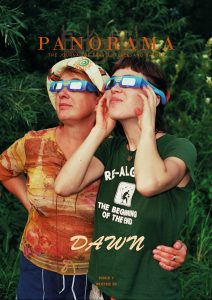It is easy to spot the large shell of a loggerhead turtle as she emerges from the white surf of this picture-perfect beach. She begins her long crawl up the sand to find a suitable place to nest. She stops and begins to dig.
*****
Just an hour’s drive from the Mexican resort town of Cancun, there is a beach so picturesque its image could grace any postcard from the area. The white sands are tinted with pink from the red coral that has eroded in the reef and beyond this lies crystal blue Caribbean water. Mangrove forests, dotted with freshwater cenotes, approach onto the sand and palm trees bow towards the open water. Hundreds of baby hermit crabs walk across the wet rocks, retreating into their tiny shells as they are disturbed by a crashing wave, baby angelfish dart in and out of the small crevices in rock pools as frigate birds and pelicans dive into the sea in search of food.
Next to this beachfront paradise there are no hotels or resorts and no tourists are sunning themselves. There are a few wooden frames of long deserted huts that once overlooked the sea, but this is the only sign of human intervention, which is a rarity in this area. Armed guards patrol at night in an attempt to combat the drug smuggling rings that operate in this area but this is not why the beach remains untouched.
The reason for such solitude can be found away from the water’s edge – just before the sand disappears into the mangroves- in the form of several numbered sticks, indicating nests of recently laid turtle eggs.
Of the eight species of sea turtle seven can be found in the Gulf of Mexico and two of these nest on this beach. Experts believe that the loggerheads and green turtles that have come to this beach in the past have returned to the very place they were born. The increase in tourism to the beaches around this area and the associated infrastructure, has meant that few females come ashore to nest and of those that do, few eggs survive to hatch. In addition, the illegal demand for turtle shell jewellery or ashtrays, the accidental capture in fishing nets, pollution and other human activities has seen turtle numbers decline rapidly in recent years.
It is a warm night in the middle of summer as we join Sylvia and Jose, from the Turtle Team, who have offered to give me an insight into the lives of an amazing and ancient creature. The Turtle Team aims to study the female turtles that come onto this beach and help to ensure that a maximum number of young not only hatch but also make their way to the sea.
Fences protect the nests that are about to hatch and as the young emerge from the sand they are placed in containers to be carried close to the water. Sylvia explains that they believe young turtles first find their way to the water by the reflection of the moon and away from deserted beaches like this many are distracted by the lights of civilisation and never make it to the sea.
I am handed a large bucket, in which dozens of turtles, that hatched only minutes ago, have been picked from their nest. Their tiny flippers all bang against the plastic sides in a frantic attempt to escape. I reach in and pick one up: it stops moving and sits motionless in my hand. Just enough time for alarm as I wonder how I could have harmed such a young creature, for it only for it to start moving again within seconds.
Turtles imprint the chemicals and texture of the sand on the beach where they were born, enabling them to return when they reach sexual maturity in as many as 50 years. For this reason, while they can be given a helping hand towards the ocean, they must make the last few meters of the journey into the sea on their own, risking huge surf and hungry seabirds.
I walk down the beach, leaving a good ten metres between myself and the waves; an appropriate distance for the hatchlings to imprint their environment before they reach the water, I am told.
“Make sure you swim away from anything with big teeth” I say to the turtle before I put it down on the sand. As soon as its flippers find solid ground it rapidly crawls towards the water, the full moon reflecting brightly on the waves. As I release the others, dozens of tiny shells and flippers, crawl toward the breaking surf and tiny shells quickly disappear into the white surf as waves crash over them. I wonder how such a tiny creature can even survive entry into the water, let alone the other challenges they will face in the ocean.
The best estimates expect only one in 1, 000 turtles to survive to sexual maturity, some experts place their chances at as little as one in 10,000, or less. Out of all the turtles that hatch on this beach over the summer, perhaps only one or two, at most, will return to lay their own eggs.
In other areas, Turtle Teams recapture newly hatched turtles after they have entered the water and keep them in captivity for a year or so, allowing them time to grow to a size that will deter most predators, but this group doesn’t have a budget for such a program. Fighting the growing number of hotel chains that want to build resorts on this beach has exhausted all the funds of environmental groups in this area and a strong team of volunteers is all that these turtles must rely on.
With all the baby turtles released, I sit on the sand and keep a keen eye on the ocean, looking for a visitor I’m keen to spot before I go home.
It is easy to spot the large shell of a loggerhead turtle as she emerges from the white surf an hour or so later; the moonlight reflecting brightly off her shell. She begins her long crawl up the beach to find a suitable place to nest as I sit motionless, ensuring I don’t disturb her progress. She stops as the sands begin to form into small dunes and, after a brief pause begins to dig. Sand flies in all directions as her flippers shift the sand in front of her. Several minutes later, as her shell begins to disappear in the growing mound of sand she emerges and moves forward a few meters before beginning to dig again. Sand flies up behind her for a few minutes, before it stops, and she moves on yet again. The position of a nest is crucial to its survival: too wet and the eggs will rot; too dry and they will desiccate. Soon her shell has disappeared into the sand and her presence is only visible from the sand that flies into the area at regular intervals. It appears she has found a suitable place.
Once a turtle begins to lay she is not distracted by visitors and Silvia invites me to approach. The turtle rests in the hollow she has dug and lies almost motionless as she begins to lay. Tears, dusted with sand, run slowly from her eyes as she pauses to take deep breaths, then a small egg drops into the hole behind her, followed by another seconds later, then another. It is difficult to picture how the palm-sized hatchling I had released earlier that night could grow to over a meter long, as this female was. I begin to wonder what drives these creatures to take so much care for their young; that they will never see and will most probably not survive past the first year.
After about twenty minutes she lets out a final puff of breath before the final egg drops into a pile of probably a hundred other eggs. She pauses briefly before moving forward slightly so her flippers are either side of the eggs. She begins to push sand over the pile of eggs, patting the loose sand down with an opposing flipper as she does so.
The nest must be covered with an exact amount of sand, Sylvia explains, with enough pressure to preserve the moisture and integrity of the nest, but not so much that the hatchings would be entombed below.
The eggs are no longer visible as the turtle crawls partly out of the hole and uses her front flippers to push sand behind her. After several clouds of sand pass behind her, the hole is filled and only the loose sand indicates that anything has happened here at all.
Despite her efforts of the past half an hour and the significance of what has happened, the turtle barely pauses before turning 180 degrees and making slow progress back to the ocean.
Three other turtles – one greenback and two other loggerheads – are now on the beach and Sylvia and Jose leave to check on these new arrivals and record data for their research. The information they collect helps to establish the stories of these creatures: their numbers, distribution, visits to this beach and an estimate of their age. Radio tags on some turtles have tracked them swimming from Mexico to South Africa and Australia before returning to the same beach in two or three years time to lay again.
I am left alone to watch the turtle disappear into the water, her shell disappearing below the surf, just as I had at the beginning of the evening. Unlike earlier though, it is likely that this turtle will return.
*****
More information
Turtles come ashore on many of Mexico’s beaches during the nesting season, which is typically April through September, but only a few beaches have dedicated teams of volunteers. It is not recommended you visit nesting beaches at night without a trained specialist or guide as your presence may unwittingly threaten these creatures further.









